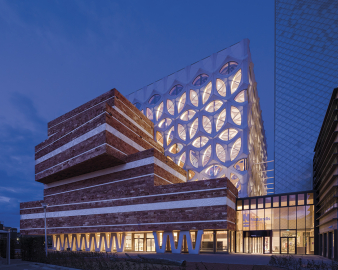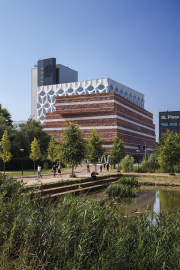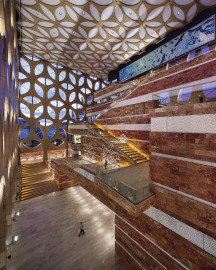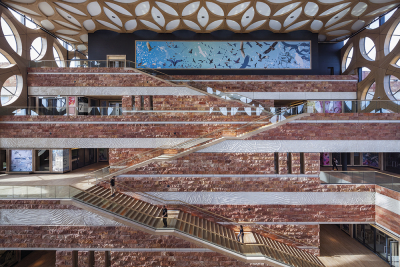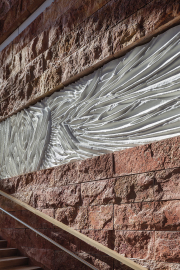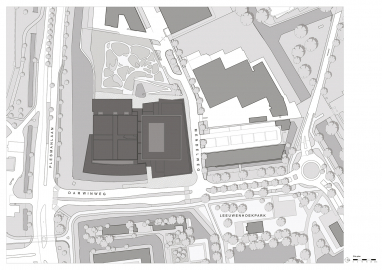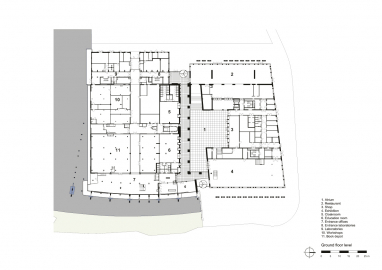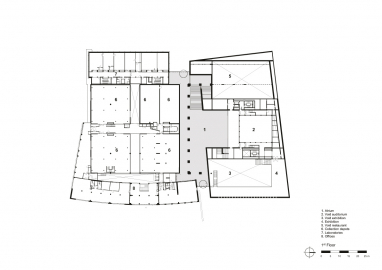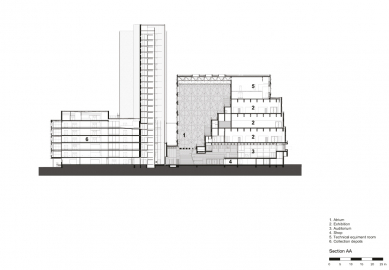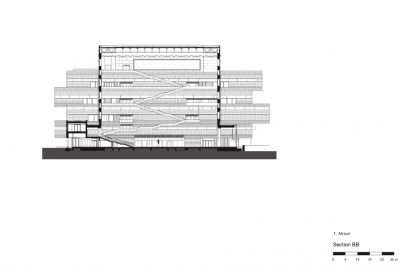Naturalis Biodiversity Center
State-of-the-art Naturalis Biodiversity Center in Leiden shows the beauty of nature.
The new Naturalis Biodiversity Center in Leiden (NL) forms a sustainable ensemble of existing buildings and new-build, with each activity housed in a specific form. The central atrium where scientists, staff, students and families meet, connects the various parts of the institute: the existing offices and depots with the newly built museum and laboratories. The filtered light that enters through the ‘glass crown’ above the spacious atrium reinforces the monumentality of the space.
Public functions such as the restaurant, the shop and the exhibition hall can be found on the ground floor where passers-by can catch sight of the examinations of the last whales washed ashore. The main staircase leading up to exhibitions resembles a mountain path, becoming narrower at the top with enough space to welcome Trix, the sixty-six million years old T-Rex which has been given pride of place in the Dino Era gallery.
The Dutch research institute with a long and rich history, founded by King Willem I in 1820, experienced an exponential growth in the last decade which led to an urgent necessity to renovate. The number of visitors increased rapidly to 400.000 per year.
The key of this sustainable project was the idea to reuse the original museum building for the required offices and depots, combined with the realization of a completely new and future proof museum building with modern and multifunctional exhibition halls large enough to expose the T-rex.
The new Naturalis brings the growing collection of 42 million objects together (top five in the world). Its state of the art facilities accommodate more than 200 researchers whose studies are at the center of attention, contributing solutions to global issues including climate change, the decline of biodiversity on earth, food supply and water quality. The Naturalis facilities and the collection enable to contribute solutions at the highest level. At the same time the new museum offers the chance to show the public the wealth and beauty of nature.
The impressive atrium consists of a 3D concrete structure, referring to shapes one often finds in nature. The exterior of the exhibition halls with horizontal stone layers mimicks a geological structure. Natural crystals in the travertine create beautiful sparkles. The travertine layers are interrupted by friezes of white concrete, designed by famous Dutch fashion designer Iris van Herpen. She designed 263 panels which seem to be smooth as silk, thanks to a special technique developed for Naturalis. Inside the museum, Dutch designer Tord Boontje shows almost 100 colorful wall panels. They are visual stories that reveal the wonders of the natural world.
As a Biodiversity Institute, Naturalis has taken into account all available sustainable measurements to improve biodiversity. All parts of the building have green roofs to promote biodiversity and provide part of the required water buffering in the area. To highlight a few sustainable aspects: for energy generation, the roofs are provided with PV panels and the institute uses energy-efficient electric heat pumps for heating and recirculation.

